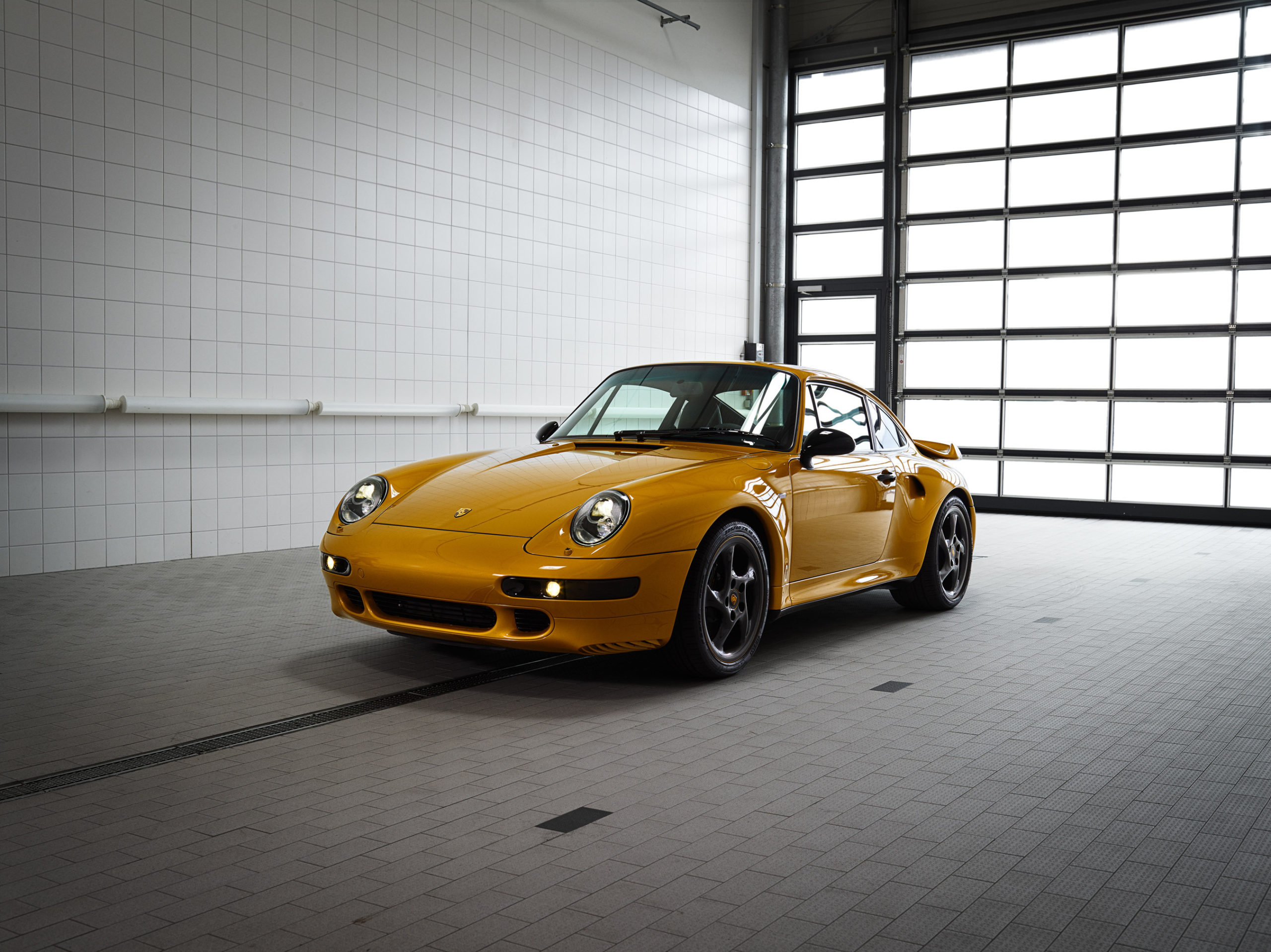In a demonstration of restoration expertise, Porsche Classic has created a 911 Turbo with an air-cooled engine 20 years after the end of production of the 993 generation.
The show car is based on an original body shell painted in Golden Yellow Metallic-”the same color as the 2018 911 Turbo S Exclusive Series. The black wheels are highlighted by Golden Yellow design accents, while the seats and interior trim also are finished in black with Golden Yellow details.
The body shell features the characteristic side air intakes of the 993 Turbo S that were also available as an option for the regular 911 Turbo in 1998.
Developing 450 hp, the project will celebrate its world premiere Sept. 27 at Porsche Rennsport Reunion VI at WeatherTech Raceway Laguna Seca. Project Gold, which is not legal for registration or street usage and is limited to driving on private tracks, will then be auctioned in a global event to be held Oct. 27 by RM Sotheby’s at the Porsche Experience Center in Atlanta.
Proceeds from the sale of Project Gold will be donated in Germany to the Ferry Porsche Foundation, a non-profit organization dedicated to education, social issues and youth development established earlier this year to mark the “70 years of Porsche sports cars” celebrations.
“Project Gold showcases the comprehensive skill of Porsche Classic in fascinating fashion,” said Detlev von Platen, member of the executive board of Porsche AG responsible for sales and marketing. “This project clearly demonstrates our strategic approach. Although we are starting a new chapter in our sports car history with the Porsche Taycan, the story of how the company evolved is no less significant. On the contrary, this Golden Yellow show car based on the 993 shows how incredibly passionate we are about the tradition of our brand.”
CELEBRATING 70 YEARS
The project represents Porsche Classic’s contribution to the “70 years of Porsche sports cars” celebrations. With the anniversary in mind, as well as the forthcoming market launch of the Taycan as the first purely electric Porsche sports car, the experts at Porsche Classic came up with the concept of building a show car based on an existing genuine type 993 body shell to showcase both tradition and innovation, according to the company.
The team relied on a selection of more than 6,500 genuine parts that Porsche Classic offers exclusively for 993-generation Porsche 911 models. Overall, the Classic division currently stocks some 52,000 parts, which customers can source via Porsche Classic Partners and Porsche Centers around the globe to repair and restore classic Porsche cars.
Construction of the unique vehicle took approximately one-and-a-half years. The body shell first went through the corrosion protection and painting process applied to today’s series-production vehicles. It then was assembled and tuned by Porsche Classic specialists at the Porsche Classic restoration workshop near Stuttgart.
A brand-new 3.6-liter twin-turbo flat-six engine developing 450 hp was installed, delivering performance similar to that which a 993-generation Turbo S vehicle would have had when it was in production. The manual transmission and all-wheel drive components were also sourced from the Porsche Classic range of genuine parts.
The hand-stamped chassis number follows that of the last series-production street-legal 993 Turbo, which rolled off the production line in 1998.
The exterior and interior elements were coordinated with the workshop’s dedicated Porsche Exclusive Manufaktur experts who were responsible for creating the 2018 911 Turbo S Exclusive series. To complement the elements, designers at Style Porsche worked on the color gradients and positioning of badges as well as other interior details.
The 993 remains a sought-after collector’s item to this day and is considered a particularly sophisticated vehicle. It was the first 911 to feature an aluminum multilink rear suspension, giving it exceptional agility for its time.
The 911 Turbo version of the 993 was also the first to have a twin-turbo engine. The front section is lower-slung than on the earlier 911 models, thanks to a switch from round to poly ellipsoidal headlights.
Hollow-spoke aluminum wheels, a first for any car with aluminum wheels, were another innovation of the all-wheel drive 911 Turbo version. Only 345 units of the 911 Turbo S with its 450-hp performance-enhanced engine were built.
